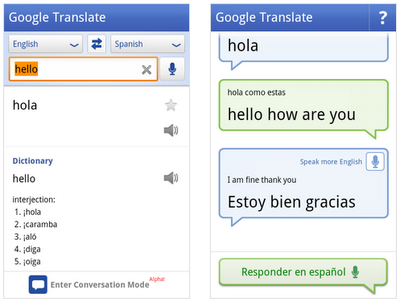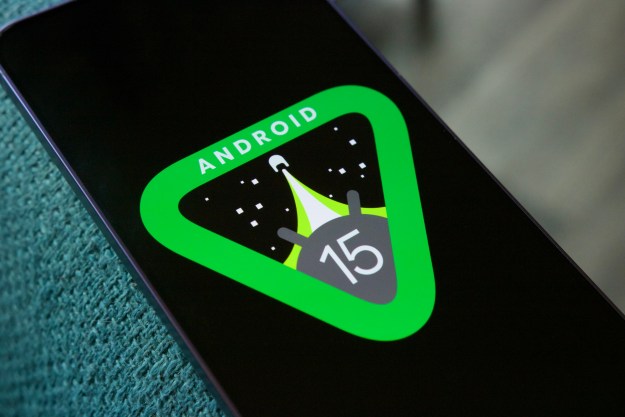 Google has moved a step closer to making us feel like we are really living in the future. Yesterday, the Internet giant announced an update for its Google Translate app that brings live-speech translation to its Android app. Google has tagged the new feature with the decidedly un-futuristic name of “Conversation Mode.”
Google has moved a step closer to making us feel like we are really living in the future. Yesterday, the Internet giant announced an update for its Google Translate app that brings live-speech translation to its Android app. Google has tagged the new feature with the decidedly un-futuristic name of “Conversation Mode.”
Real-time translation is activated with a press of a button and then a phrase is spoken into the device. So if you’re trying to find out what time your bus leaves for Madrid, you simply speak “what time does the bus leave” into your device. The sentence is then translated in real-time and read back in Spanish so that a bus driver or passerby can hear and respond. A response given in Spanish can then translated back into English, effectively enabling a two-way conversation to take place without either party having to depart from their native tongue.
Google warns that Conversation Mode is still in its early stages and currently only supports translation between English and Spanish. “Because this technology is still in alpha, factors like regional accents, background noise or rapid speech may make it difficult to understand what you’re saying,” said Awaneesh Verma, product manager at Google, in a blog post. “Even with these caveats, we’re excited about the future promise of this technology to be able to help people connect across languages.
In addition to the live-translation feature, Google has also updated Translate’s interface. “Today, we’re refreshing Translate for Android with several updates to make the app easier to interact with,” Verma said. “Among other improvements, we’ve created better dropdown boxes to help select the languages you want to translate from and into, an improved input box, and cleaner icons and layout.”
See below for a video of an early demonstration of Conversation Mode in action.
Editors' Recommendations
- The 10 most important things to know about the Google Pixel 8a
- Google just launched a new Pixel Tablet … kind of
- Google Pixel 7a just dropped to its cheapest ever price
- The most common Google Pixel 8 problems and how to fix them
- How to get Android apps on a Chromebook

